Seattle Author Spotlight (4) — Greg Bem
This is the 4rd Seattle Author Spotlight (previous ones were Richard Chiem, Maged Zaher & Deborah Woodard)
And it’s Greg Bem!
Greg was one of the first Seattle writers I saw read/perform here in Seattle and Greg was one of the first Seattle lit people I actually talked to here in Seattle. Greg was really friendly and every time I saw him (he seems to be everywhere, reading, video taping, listening, enjoying, networking) he introduced me to other people. He also invited me for Mexican Happy Hour and that was grand. Greg also organizes readings in bars, on trains and in abandoned buildings, etc.
Greg, in his own words, is mainly a “situational poet”, preparing text (sometimes accompanied with video, music, musicians, etc) that’s only for that situation, that performance. Greg, though, is set to leave for Cambodia and will be gone for at least six months. He will be missed.
Here, on the other hand, is a link to some poems Greg just got published on-line.
Brief Bio:
I’m not leaving my bed in the gloom
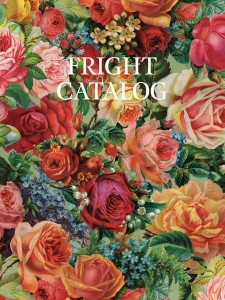 Fright Catalog
Fright Catalog
by Joseph Mosconi
Insert Blanc Press
100 pages / $24.99 Buy from Insert Blanc Press
Fright Catalog is a gorgeous, huge, glossy, expensive looking magazine. That makes it more fragile, more disposable than most books. I’ll probably put it on the wall when I’m done with this review. It’s also a work that you might carry around and show off. Or like something out of Borges, you might want to check in on the book to see if the words have mysteriously reshuffled into even more hideous koans.
Each page is a different visual/textual work, set in super large sans serif font centered on a brilliantly colored slightly glossy page. Mosconi is part of The Poetic Research Bureau, which “favors appropriations, impersonations, ‘compost’ poetries, belated conversations, unprintable jokes and doodles, ‘unoriginal’ literature, historical thefts and pastiche.“Based on that, you can imagine that the book is going to use some “mechanism” of unoriginality, in its creation, but the book itself doesn’t give it away. All you get is this:
“Each Stanza of Fright Catalog was fed through the search engine of an online Color Theme generator. A different color theme was determined for each stanza resulting in the color combination you see on each page of this book. Every color theme addresses your feelings and is employed for certain moral ends.”
A book like this doesn’t ask you to consider it as a project; it demands to be recognized as one. Sometimes that “chance” part of the project produces amusing/intuitive result (ie vampires get mentioned and you get a red/black color scheme) but it also hints that there is some other project going on with the text. Luckily, or unluckily, Craig Dworkin reveals the source of the text on the Insert Blanc site:
“Secrets, in these scenes, threaten to become singularities. Such, of course, is the reductio of all subcultures. And “Poetry,” for “Culture,” has become the ultimate and necessary subculture of them all. Fright Catalog is thus in part a dissertation on the sublime terror of the poetry scene today — with all its partisan scholasticism and stupid undergrounds (as Paul Mann would say). But this catalogue is also attuned to the poetic possibilities of subcultural discourse, to the phonemic tensions and narrative frissons that arise when metal lyrics are mashed up with phrases taken variously from online gaming dialogues, occult forums, and the secret language of adolescence (by definition: misunderstood; mardy; uncommunicative and inscrutable).”
That’s about half of the blurb. If you’re not keeping track of obscure metal from the past 20 years or so, then you might not notice that some of the more absurd (and startlingly beautiful) moments of this book are simply song titles. I think that the sublime terror can be read as a response to contemporary poetry, but sublime terror, a la Romanticism, or an inverted modernized terror/sublime, is also a major ingredient in metal and this work. Mosconi takes metal and other texts and distills something essential about terror and the sublime from them:
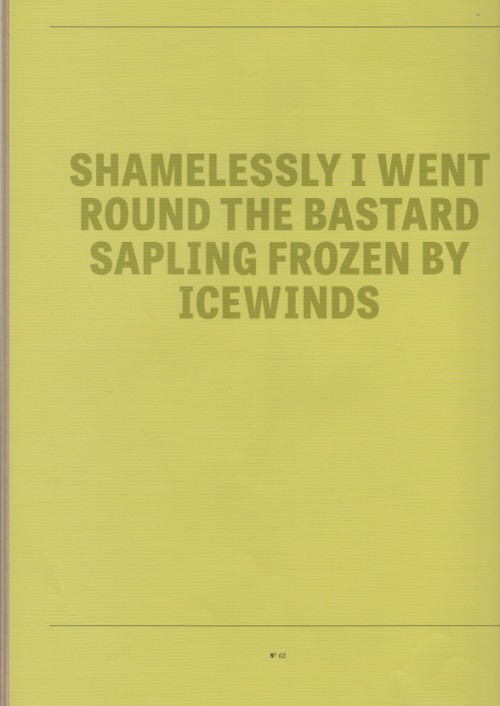
July 12th, 2013 / 11:00 am
A Room in the Living Ruin of the Lyric
 Hosni Mubarak
Hosni Mubarak
by Jared Joseph
Persistent Editions, June 2013
35 pages / $8 Buy from Persistent Editions
Hosni Mubarak is author Jared Joseph’s second chapbook of poetry, and Persistent Editions’ inaugural publication. Mubarak’s lyric-challenging poetic establishes Joseph and Persistent Editions as poet and press to be followed.
What strikes first about this collection is its cover: a photo of Mubarak from the shoulders up, his faced streaked in neon reds, yellows, and blues. We know straight off that we are in potentially provocative territory. When the critical reaction to Carolyn Forche’s The Colonel remains today as a reminder not to vacation in the suffering of others, it might seem that a book – written by an American – that takes the name of a deposed Egyptian president might be waiting for the same charges to be levied against it. Not so. What we have here is a different entity entirely.
Here, the emotional counterparts (see: apathy, detachment, disillusionment) to Western media-era remove from world events are not elided; instead they provide the bridges that Joseph uses to write into his encounters with “Mubarak”. Yet Joseph is able to do this without twisting the work to become pedantic – there is no claim to a better perspective, no call for empathy or action other than what might be suggested by its lack. Joseph moves in and out of autobiographical modes through the eyes of this imaginary Mubarak: these qualities are explored in Mubarak, and in the speaker inside Mubarak. This is not a convenient mirror in which to better see ourselves – this is the light across it, the shimmer of something just behind our shoulders, and the language is its play.
The voice of Joseph’s Mubarak is at once erudite and childlike: language not used exactly, but capably, as if itself exempt from a pressure to be dutiful – it phrases the world as it pleases. The speaker shifts fluidly, almost arrogantly, between lexicons: the scientist’s, the politician’s, a young man’s – shifting code and binding vocabularies together, and in the process enacting a wild sense of entitlement:
a tension reservoir of air, something requiring the first exhale-
ation, I don’t really understand natural laws. Anyways, just
one finger needed to fire empty the casing.
July 12th, 2013 / 11:00 am
REDEMPTION THREE: BETTER THAN EVER OR BETTER OFF DEAD?
In this mini-series the saga of redemption, as frequently manifested in the form of “comebacks,” is investigated. REDEMPTION ONE is here. and REDEMPTION TWO is here. Read REDEMPTION ONE before REDEMPTION THREE, inserting REDEMPTION TWO between them.

John Galliano, redeemable or not, is alive.
II. EMPIRICAL EVIDENCE
b. Better Off Dead? Two cases of Dubious Post-Mortem Redemption
As the example of time illustrates in the case of Adler, exogenous elements factor in whilst public figures are on a path towards redemption. Interestingly, the most practical way to pursue redemption might be dying. The death of a public person continues–to this day of non-secular dimensions–to make the majority of media consumers feel a predominant desire to respect their deceased status. This theory effectively extends to the redemption of some of the most controversial individuals.
MARGARET THATCHER
Margaret Thatcher’s death sparked a discourse on the very topic of the appropriateness of global media industries using unnecessary euphemisms following the passing of public figures. The mentality of “one must not speak ill of the dead” looms as a dangerous approach when it pertains to political leaders. By picking and choosing the legacy of politically-engaged people, those who pick and choose create a false record of the events that carved the lives of others.
Thatcher’s individual saga as a leadership paradigm certainly includes grand successes. She was elected thrice as the Prime Minister of the UK and was both the first female PM of the UK and first female leader of a Western country in recent history. Additionally, she actively introduced her set of conservative, nationalist political beliefs, widely known as Thatcherism.
Heated debate surrounded Thatcherism, as well as Thatcher herself. For media outlets to neglect the heavy criticism she received–and often persuasively argued against–because of her death appears callous, but also oxymoronic at its core subject, because it contradicts the nature of the person Thatcher was: a self-proclaimed “conviction politician.” Her priority was staying true to her values, despite the anticipated reaction her values would yield. It seems highly unlikely Thatcher herself would hesitate to speak ill of the dead. READ MORE >
25 Points: Burial
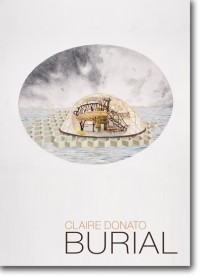 Burial
Burial
by Claire Donato
Tarpaulin Sky Press, 2013
104 pages / $14.00 buy from Tarpaulin Sky
1. For reasons both Biblical and practical, we must “let go the dead.” But “persons never completely let go the dead.”
2. The main characters of Donato’s debut never leave the side of the dead. Father, dead, belongs here. The unnamed woman is describing as checking-in to the morgue. She’s there to stay, also, for a while.
3. Burial is concerned with the strangeness of death, something lost in its ubiquity, until we see it close. At another funeral near the start of the book, the congregation is described as “yawning, unable to recognize the weight of the ghost.” Mouths open, they might as well have been singing.
4. Donato’s heavy usage of commas, in the vein of Peter Markus (We Make Mud) and William Gass (“The Pedersen Kid”) before her, is almost a way of stalling all death.
5. Father is dead. His capitalized self stands like a tree amongst the brush of other words.
6. “Father was a man. He taught lessons in his language, and also raised his voice. ‘A lovely day to go fishing,’ he said. ‘The water is frozen,’ he said. Then he drowned in the lake.”
7. Burial is a grief-dream, an attempt to un-sew pain from experience and to reveal it in language.
8. “Mind’s a confused, tangled skein.” Particularly when it is pulled by pain.
9. “And the doe—the poor, female doe—collapsed at the scene. Two cracks rang out. He shot her. He shot her dead. ‘A lovely day to go fishing,’ he said, yet before he could indulge in his reward—field dress the damn deer and pay tribute to his success, his all-time best, grand aptitude for chase—he drowned in the lake.” Father’s final moments return, as grief does, often in different permutations. What’s the point of language if it can’t unmake and remake?
10. There is the woman, and Father, and Groundskeeper, who “kneels beside her bright yellow bucket,” and is the keeper and cleaner of these dead. READ MORE >
July 11th, 2013 / 12:09 pm
Subito Press is Open for Submissions…
Subito Press, publisher of Mathias Svalina’s The Explosions, and Sandra Doller’s Man Years, is having an open reading period. Subito is “a non-profit publisher of literary works. It is based in the Creative Writing Department at the University of Colorado at Boulder.” You can submit work, here.
Sculpture Garden
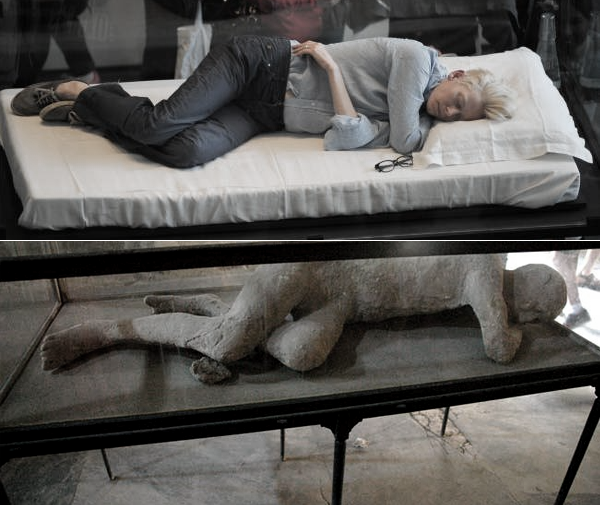
History repeats itself, first as tragedy, second as farce.
– Karl Marx
My parents are on their annual cruise, this time the Mediterranean. They disembark from Nice France, making their way to Naples Italy, then Greece. “They’ll probably have you visit Pompeii,” I said to my mom. “What’s that?” she said, stuffing $40 dollars worth of fruit into a juicer. “Where an entire city got buried in ash, thanks,” I said with a new smoothie in hand. In about two weeks, when they come back, my mom will call me on the phone (while I’m at work) with an exhausting account — she’s been known to take notes — of all of my dad’s cultural, personal, and moral transgressions. “Sure,” I’ll say, in response to accompanying her — who vowed, again, never to step on a ship with my dad, ever again — next year to the cruise. I’ll internally dread going, as I dread most things on the horizon, where I imagine burning bodies and a cable bill. This is my life.
When Kerosene’s Involved
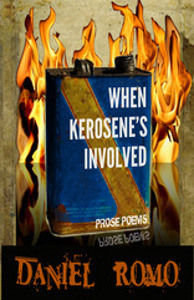 When Kerosene’s Involved
When Kerosene’s Involved
by Daniel Romo
Black Coffee Press, 2013
100 pages / $12.95 buy from Amazon
Rating: 9.0
Confession: I bought this book because the cover is pretty rad. I don’t even know how I came across the book, but I’m glad I did. The poems in here, as the title and cover suggest, are bundles of fire. Upon reading, the embers blaze into your guts and you are left a charred individual. Romo skillfully blends fantasy and narrative, pop culture and persona poems, while adhering to the integrity of the prose poem. Make no mistake: THESE are “prose” “poems.” They are not glorified flash-fiction incorrectly labeled as prose poetry, as much writing is today. The poetry in the book is first, foremost, and evident. Take the book’s first lines from the first poem, “Singe.”
Grandpa Manuel burned the beaks of chicks. Scooped them up in his rancher hands and played agricultural matchmaker: searing metal kissing their tiny mouths.
July 9th, 2013 / 12:09 pm




